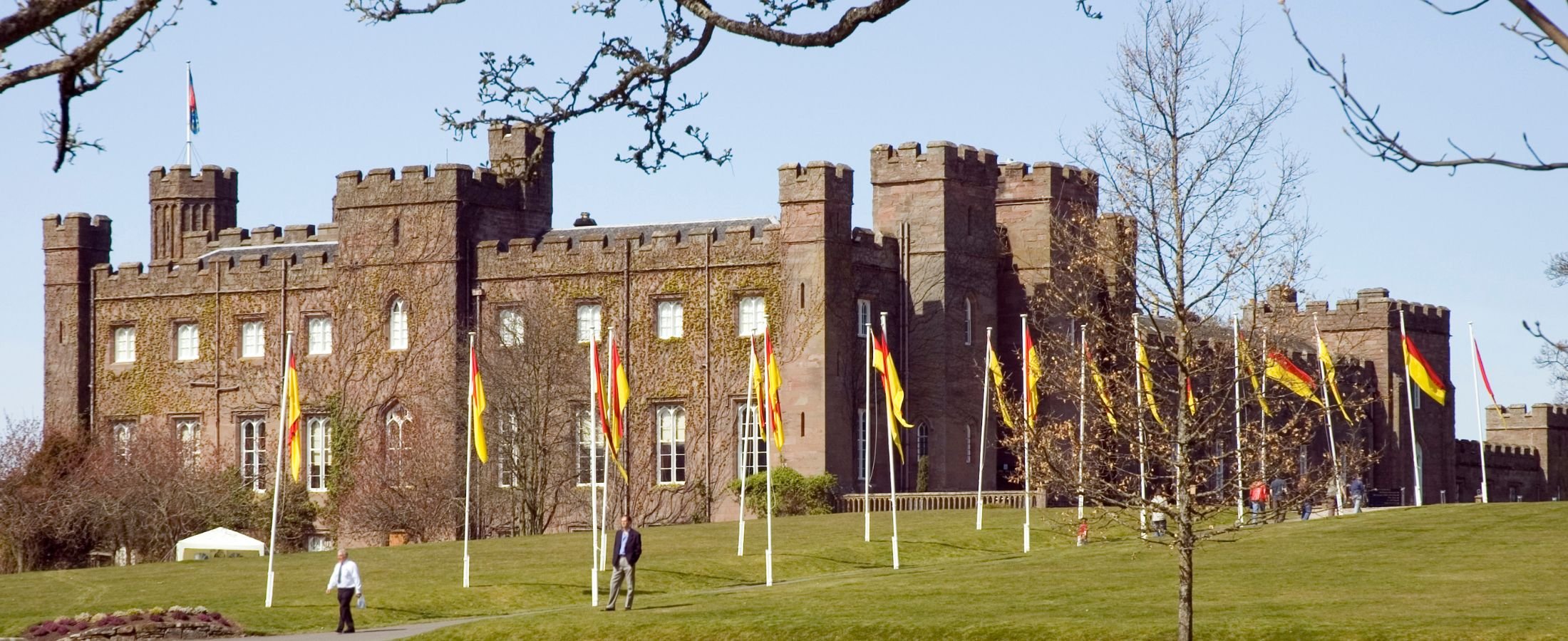
Scone Palace: Crowning Place of Scottish Kings of Old
Scone Palace, a site that witnessed the coronation of Scottish monarchs such as Macbeth, Robert the Bruce, and Charles II, is steeped in rich historical significance. This remarkable place exudes history like no other in Scotland. It serves as the ancestral residence of the Earls of Mansfield and holds the legacy of being the ancient crowning venue for Scottish kings upon the renowned Stone of Scone, also known as the Stone of Destiny. Although the Stone now resides in Edinburgh Castle, the echoes of its past glory still resonate at Scone Palace.
A House of History
Stroll down the Long Galley, retracing the path King Charles II took to his coronation in 1661. Dive into history as you explore the place where the 'Old Pretender' stayed for three weeks during the Jacobite rebellions, while his son, Bonnie Prince Charlie, visited in 1745.
Marvel at the exquisite needlework in Mary Queen of Scots' bed hangings, created during her time as a prisoner on Loch Leven. Witness the desk where the ill-fated Queen Marie Antoinette wrote her letters before her tragic fate at the guillotine.
From Abbey to Palace: A Storied Past
The grounds of Scone Palace have been hallowed land for centuries. Originally, this site served as a place of worship, hosting an early Christian church before transforming into an Augustinian priory. However, the path of history took a tumultuous turn during the Scottish Reformation in 1559. At that time, a fervent mob, incited by the famous reformer John Knox, descended upon Scone from Dundee, resulting in severe damage to Scone Abbey.
Surviving the upheaval of the Reformation, Scone Abbey transformed into a secular Lordship and a home within the parish of Scone, Scotland, in 1600. For over 400 years, Scone Palace has been the cherished residence of the Earls of Mansfield.
A Vision of Gothic Grandeur
During the early 19th century, Scone Palace underwent a magnificent transformation under the skilled hands of architect William Atkinson. In 1802, David William Murray, the 3rd Earl of Mansfield, entrusted Atkinson with the task of extending the Palace. The result was an awe-inspiring blend of old and new—a palace that retained the distinctive features of the medieval Gothic abbey buildings upon which it was constructed. Most of this transformative work was completed by 1807.
Palatial Grounds
Surrounded by enchanting gardens and serene woodlands, Scone Palace offers the perfect backdrop for a leisurely stroll or a delightful picnic. Throughout your visit, you might encounter the ever-curious peacocks keeping watch. Children can enjoy a fantastic adventure playground, while the unique 'tartan' maze of 2,000 beech trees, designed by the renowned Adrian Fisher, provides an intriguing challenge, shaped like the heraldic Murray Star.
Discover the majesty of Scone Palace—a place where history and elegance converge, and where the past comes alive in every stone and corridor, on our tour from Edinburgh! Click the picture below.




